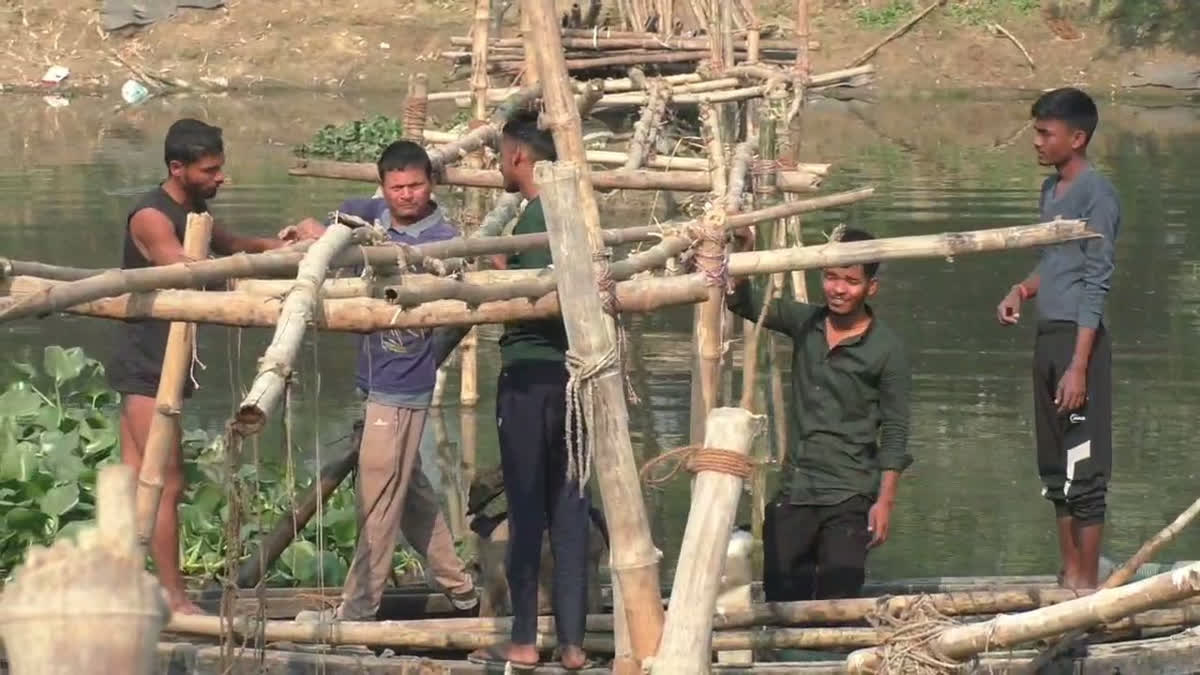Varanasi: For the villagers of Daniyalpur in Banaras, the absence of a bridge is more than an inconvenience—it is a challenge they have been facing for decades. With no help in sight from authorities, the villagers take matters into their own hands, constructing a bamboo bridge over the Varuna River to make life easy, year after year. It is no mean a feat, born of necessity and frustration after years of neglect.
Daniyalpur village, located just three kilometers from Banaras Cantt Railway Station, sits on the banks of the Varuna River. With a population of over 30,000, the area comprises seven smaller villages, including thousands of children, women, and elderly residents. Despite its proximity to urban areas, the village has been isolated for two decades due to the lack of a bridge over the river. While an alternative road exists, it stretches 8–10 kilometers, making daily commute an arduous and time-consuming ordeal.
Ajay, a resident, recalls the days when boats provided a simple means to cross the river. “A decade ago, the boats stopped running, and we were left with no option. We have been demanding a bridge ever since, writing letters and approaching public representatives, but nothing ever materialized,” he laments.
Without the bridge, a journey that should take 10 minutes stretches to two hours. “If the government had built a bridge, we could reach Banaras Cantt in no time. But now, we are forced to walk or cycle for hours, which has disrupted every aspect of our lives,” Ajay says.
With no option left, the villagers took matters into their own hands. Pooling in donations, they begin constructing a bamboo bridge, that cost around Rs 3–4 lakh and takes a month to complete. People from the villages volunteer to bring the bridge up. “We fail to understand why is a permanent bridge not feasible. The government should at least think of some alterntive solution like a pontoon bridge. It would make a world of difference to us,” he says.
Sans a bridge, children, particularly girls, face the hardest struggles. Anuradha, a 10th-grade student, explains how the long commute has disrupted their education. “Many girls in our village have stopped going to school because of the distance and the unsafe paths. Even for those of us who do attend, we are always late for tuition and often have to walk or cycle back home in the dark. It’s unsafe, and our families worry constantly,” she says.
